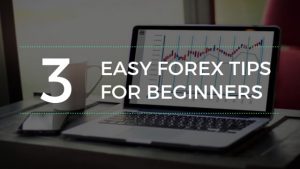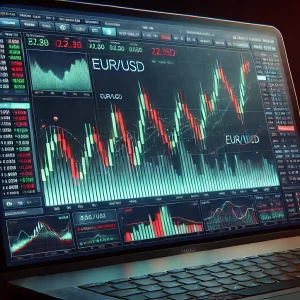Introduction
In an age where social media dominates almost every aspect of life, it’s no surprise that platforms like TikTok have become hotspots for financial content. With short, flashy videos claiming to reveal secret trading strategies or quick paths to wealth, it’s easy to understand the appeal. But behind the edits, music, and hype lies a deeper issue that’s now garnering widespread attention. A new industry report has revealed a shocking reality — as much as 80 percent of Forex trading advice on TikTok is either inaccurate, misleading, or outright dangerous. For both beginners and intermediate traders, this insight is a wake-up call and a prompt to re-evaluate how and where they get their trading education.
This article unpacks the details behind the survey, explores why so many are drawn to TikTok-style Forex advice, and offers actionable strategies for identifying trustworthy, expert-backed information. If you’re trading in 2025, and relying on social media to sharpen your skills, this could be the most important article you read all year.
The TikTok Trap: Why Forex Trading Advice Goes Viral?
TikTok thrives on virality. The platform’s algorithm promotes content that is entertaining, visually engaging, and easy to consume. Financial influencers or “finfluencers,” as they are now known, often take advantage of this by creating dramatic claims like turning $100 into $10,000 in a week. Videos promising secret indicators, guaranteed profits, or “insider signals” routinely gain millions of views.
But these short-form videos leave little room for nuance or risk disclaimers. Unlike structured educational platforms or professional trading sites, TikTok videos rarely explain the inherent risks of Forex trading, such as margin calls, leverage-induced losses, or economic news volatility. They focus instead on results over reasoning — and that’s precisely where the problem lies.
The recent survey conducted across major trading regions including the US, UK, South Africa, and parts of Asia, analyzed over 1,000 TikTok videos tagged under terms like #forextrading and #forexsignals. Researchers discovered that nearly 80 percent of these videos contained false or misleading information, often exaggerating returns or omitting critical context. Perhaps more alarmingly, some creators were found promoting broker referral links or signal groups without disclosing their affiliation — a violation of ethical marketing practices.
Who Are The Finfluencers And Why Are They Problematic?
Finfluencers are individuals with large social media followings who publish content about finance, investing, and trading. While some have legitimate experience or certifications, the vast majority do not. In fact, many so-called Forex gurus have no professional background, no regulated trading history, and no transparency about their own financial performance.
The barrier to entry for becoming a financial influencer is almost nonexistent. A smartphone, an editing app, and a few flashy terms are all that’s required. Unlike regulated brokers or licensed analysts, these individuals are not bound by compliance rules or professional standards. As a result, they can say almost anything — and many do.
This lack of accountability creates a dangerous environment. New traders, especially younger ones, are easily influenced by success stories, trading lifestyle vlogs, and screenshots of inflated profits. It creates a psychological illusion of simplicity and certainty in a market that is inherently volatile and complex.
The Real Cost Of Misleading Advice
The financial consequences of following bad advice on TikTok can be severe. According to brokers and regulators, there has been a notable rise in retail traders losing significant amounts of money after acting on strategies promoted by social media influencers. Some traders reported being urged to open high-leverage accounts without understanding the risks. Others joined paid signal groups promoted in videos, only to find themselves receiving erratic or contradictory signals that led to losses.
Beyond financial damage, there’s also a trust issue. Traders who enter the market through misleading platforms often become disillusioned quickly. When unrealistic expectations aren’t met, many quit altogether — sometimes after accumulating debt or facing margin calls. The long-term consequence is a growing population of burnt-out traders who distrust financial markets altogether.
Why TikTok’s Format Makes It Risky For Traders?
The TikTok format — short videos under one minute — is designed for entertainment, not education. Important trading concepts like risk management, technical analysis, central bank policy, and price action strategy require depth and context. Compressing such topics into bite-sized visual clips inevitably leads to oversimplification.
Moreover, the TikTok algorithm is built around engagement metrics, not accuracy. Videos that go viral are often the most sensational — not the most truthful. This incentivizes creators to produce eye-catching content, regardless of whether it reflects reality.
Additionally, viewers typically do not fact-check what they see. The persuasive power of visual cues, background music, and confident delivery often tricks the brain into accepting unverified claims as truth. This is especially dangerous for financial decisions where missteps can lead to real-world losses.
Red Flags To Watch For In Social Media Forex Content
To avoid falling into the trap of misleading Forex content, it’s crucial to recognize the red flags that commonly appear in social media videos:
Unrealistic Profit Claims: Promises of doubling your account in days or making thousands with no losses are clear warning signs.
Lack of Risk Disclosure: If a video doesn’t mention stop-losses, leverage risks, or market uncertainty, it’s incomplete and potentially harmful.
Paid Groups Without Transparency: Many influencers promote paid signal groups or mentorships without clearly stating their qualifications.
Overuse of Lifestyle Marketing: Flashy cars, luxury vacations, and cash piles are used to sell an image rather than genuine expertise.
One-Size-Fits-All Strategies: No strategy works 100% of the time for all traders. Beware of content that claims otherwise.
How To Verify Forex Advice In 2025?
The good news is that there are reliable ways to verify the quality of Forex advice — even on social media. Here are some principles that every trader should follow when evaluating a tip, signal, or educational post:
Check the Creator’s Credentials
Always research the person giving advice. Are they a licensed trader? Do they work for a regulated financial institution? Do they have a verifiable track record? Reputable educators and analysts typically have a LinkedIn profile, publication history, or affiliations with major trading sites.
Look for Regulated Sources
Information coming from regulated brokers, trading academies, or financial news outlets like Investing.com or FXStreet is significantly more trustworthy than content from anonymous influencers. These institutions have reputational risks and are more likely to present accurate, balanced insights.
Use Demo Accounts for Testing
Never apply a strategy from social media directly in a live trading account. Use demo accounts to test the effectiveness of the advice in real market conditions without risking capital.
Follow Structured Education Programs
Platforms like Babypips.com or official broker training academies offer structured, modular learning that builds real skills — not hype. They are designed to educate, not entertain.
Be Skeptical of Signals Without Analysis
Signals should always come with explanations. Blindly copying entries and exits without understanding the reasoning can lead to disaster. Good signals include technical/fundamental reasoning and risk/reward guidelines.
Why Beginner Traders Are The Most At Risk?
Young, inexperienced traders are disproportionately targeted by social media content. These individuals are often more tech-savvy and spend more time on platforms like TikTok and Instagram. The combination of lack of financial literacy and exposure to addictive, dopamine-driven content creates a perfect storm.
Beginner traders also tend to have smaller capital accounts, which makes them more vulnerable to strategies involving high leverage or poor risk management. Influencers often encourage aggressive growth strategies, not realizing that small account holders cannot absorb the drawdowns experienced by larger players.
Furthermore, beginners often lack a trading plan, and instead rely on snippets of advice or copy-trading trends. This reactive approach leads to overtrading, emotional decisions, and ultimately failure.
A Role For Regulators And Platforms
The growing influence of financial content creators has drawn the attention of regulators. In several countries, authorities are now cracking down on misleading financial promotions. TikTok itself has made attempts to flag content related to financial products and has introduced pop-up warnings on some trading-related posts.
However, enforcement is still lagging. Most misleading Forex content is never removed, and creators can easily re-upload content or migrate to other platforms. As such, the burden remains on the trader to be informed and cautious.
A more systemic solution would involve platforms requiring financial influencers to register and disclose their affiliations. Educational disclaimers, content filtering algorithms, and automated credibility scores could also help mitigate harm.
Building A Smarter Trading Path In 2025
The Forex market in 2025 is more accessible than ever before, with mobile apps, web-based platforms, and low-entry barriers enabling millions to participate. But accessibility is not the same as simplicity. To be successful, traders need to separate hype from reality and prioritize learning over fast profits. A sustainable trading journey starts with:
Clarity on goals: Are you looking for passive income, capital growth, or experience?
A real education plan: Commit to learning technical and fundamental analysis.
Controlled risk management: Never risk more than you can afford to lose.
Emotional discipline: Avoid FOMO trades or revenge trading.
Reliable tools: Use trusted platforms, data providers, and signal services.
Final Thoughts
As financial literacy becomes a global priority, the need for accurate, regulated, and professional Forex education is greater than ever. TikTok, Instagram, and other platforms can be part of the learning ecosystem — but only if users are trained to critically evaluate what they see. The era of instant influence must give way to intentional trading. A trader who reads verified reports, learns from structured courses, and tests every idea before acting will always outperform someone chasing social media dreams.
Let the 80 percent statistic from TikTok be a reminder, not a deterrent. Yes, the space is filled with misinformation — but with the right mindset and tools, you can navigate it, rise above it, and build a trading future based on facts, not flash.



